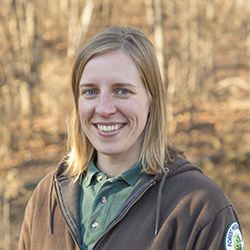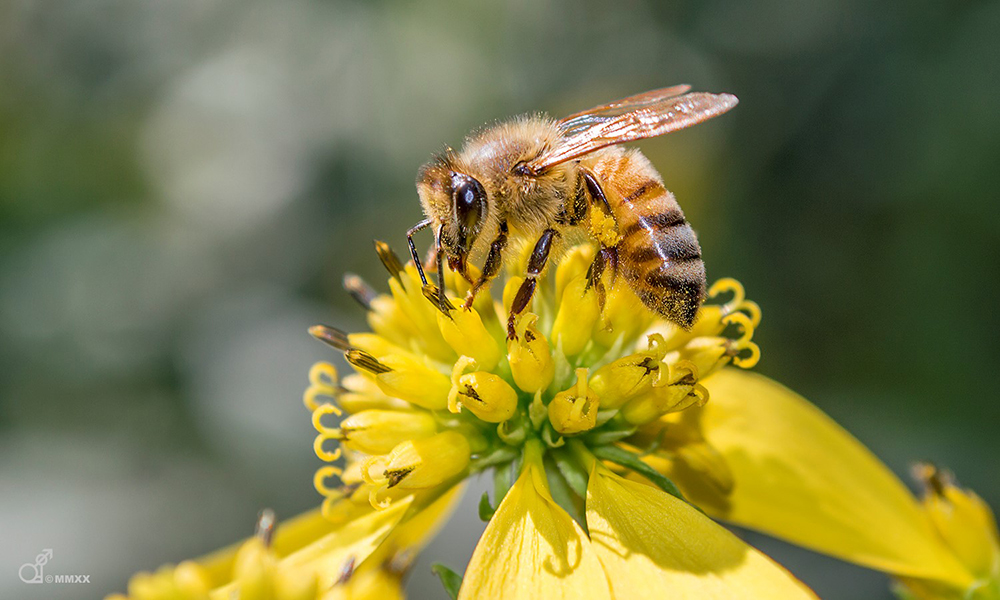
Honeybees are arguably the most well-known pollinator, but did you know that honeybees are not even native to North America? Apis mellifera, the domesticated European honey bee, originated in Europe but is now common around the world — and for good reason. These hardworking bees are the only insect to create a product used by humans — honey. How sweet is that?
Thank Bees for Your Food
Celebrate National Honey Bee Day on Aug. 20 by taking a moment to appreciate honey bees. In addition to creating sweet, golden honey, honey bees are responsible for 80% of the pollination of agricultural crops.
Being generalists, they will feed on nectar and collect pollen from a variety of plants. Therefore, they pollinate over 400 different agricultural plants including broccoli, melons, apples and pumpkins. Blueberries, cherries and almonds are almost exclusively pollinated by honey bees. Without them, the United States would lose $15 billion worth of crops each year.
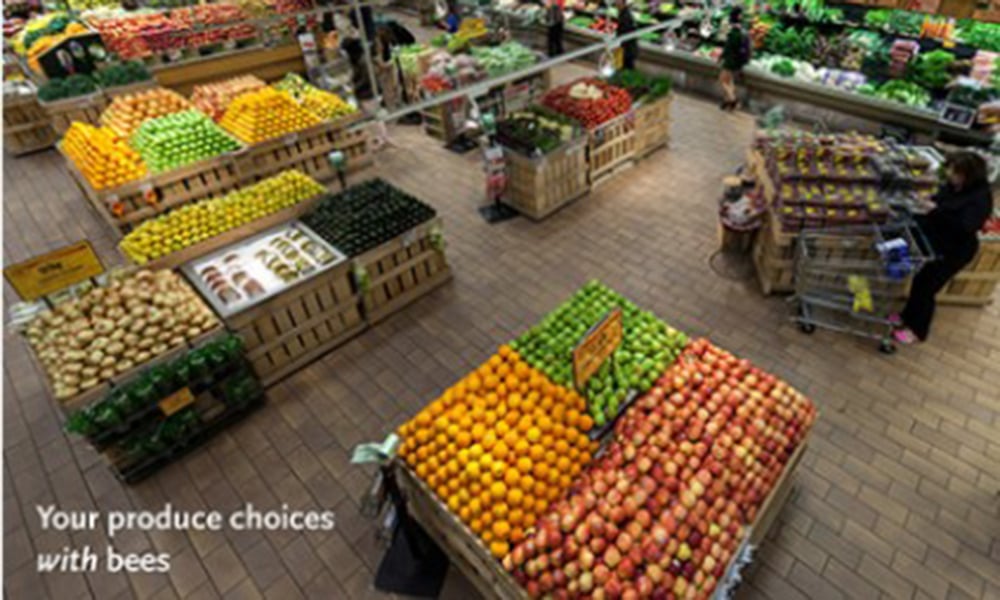
What the produce section of a grocery store looks like with bees.
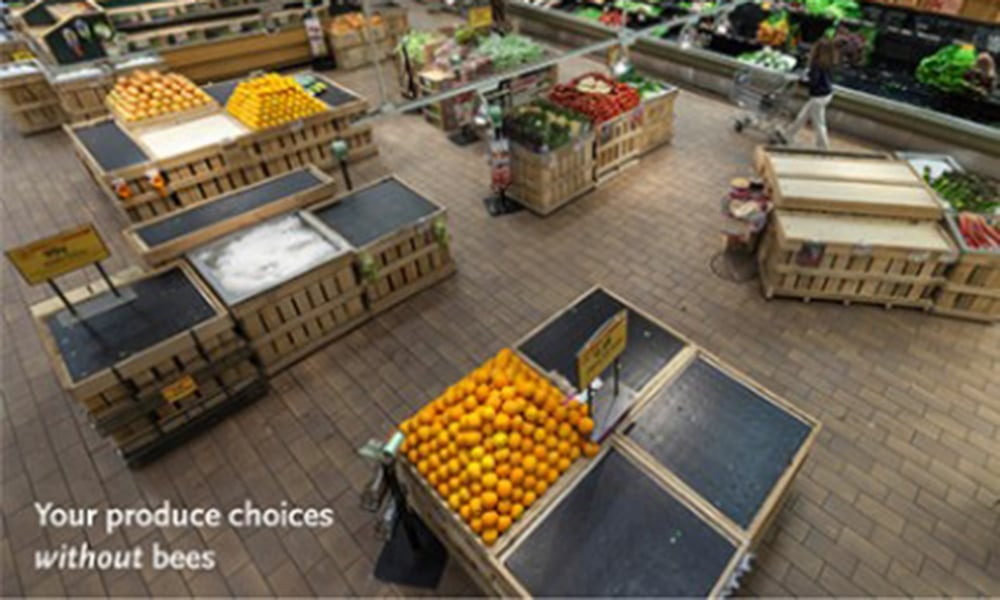
And what it looks like without bees. Photos courtesy of Whole Foods.
Surviving on Nectar and Pollen
Nectar, the sweet liquid secreted by flowering plants to attract pollinators, is an excellent source of carbohydrates, which bees use to make honey. Pollen carries the male reproductive cells of flowering plants, and it provides amino acids, vitamins, minerals, proteins and fats for bees to feed to their young in the hive. Both nectar and pollen provide essential nutrients for honey bees to survive and thrive.
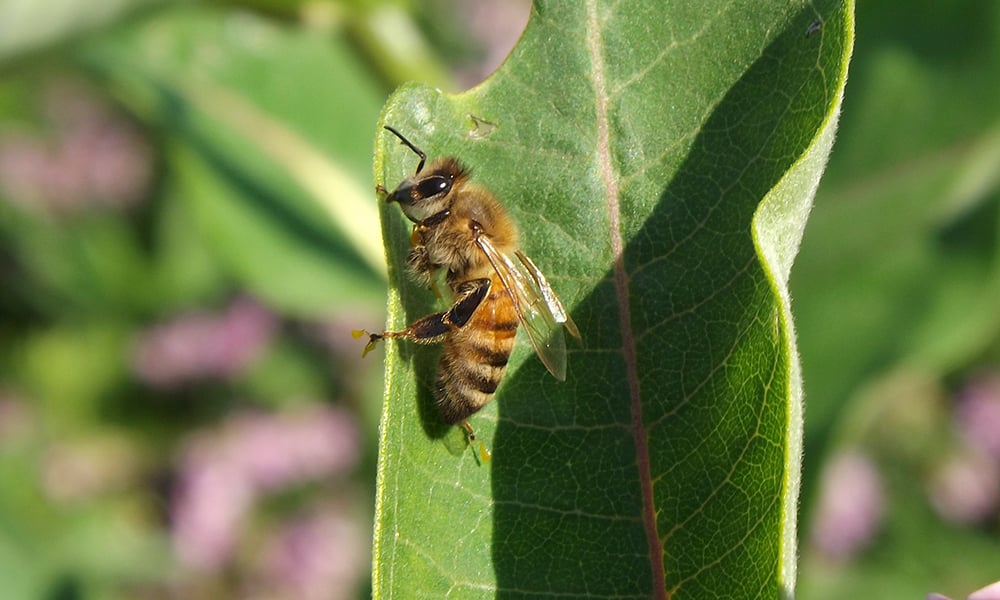
Bees pollinate more that 400 different agricultural plants.
Busy as a Bee
On average, honey bees’ wings beat 180 times per second, and they can fly 15 miles per hour. It’s good they can travel so fast because they must collect nectar from about 2 million flowers to produce one pound of honey. That much travel equates to circling around the earth twice. And one foraging honey bee will produce only 1/12th of a teaspoon of honey in her lifetime. So the next time you reach for a teaspoon of honey, think about how many bees and how many flowers were needed to make it!
Honey bees are the pollinator heroes of our food systems. Let’s celebrate all the sweet benefits they provide on National Honey Bee Day and every day. Below are several tips to support these special insects and take action to care for them, and in turn, ourselves.
- Beekeeping is a longstanding tradition at Kline Creek Farm in West Chicago. Visit the farm to see the apiary and learn more about beekeeping and honey bees.
- Grow pollinator-friendly flowers and native plants in your garden, yard or neighborhood to provide food and shelter.
- Avoid using pesticides and fertilizers on your lawn and in your garden.
- Support local agriculture by choosing local, seasonal, organic foods whenever possible. Buying local supports your community, reduces carbon emissions and increases food security.
- Find a favorite farmers market, subscribe to a share of community-supported agriculture (CSA) and look for honey and beeswax products made and sold by local apiaries.
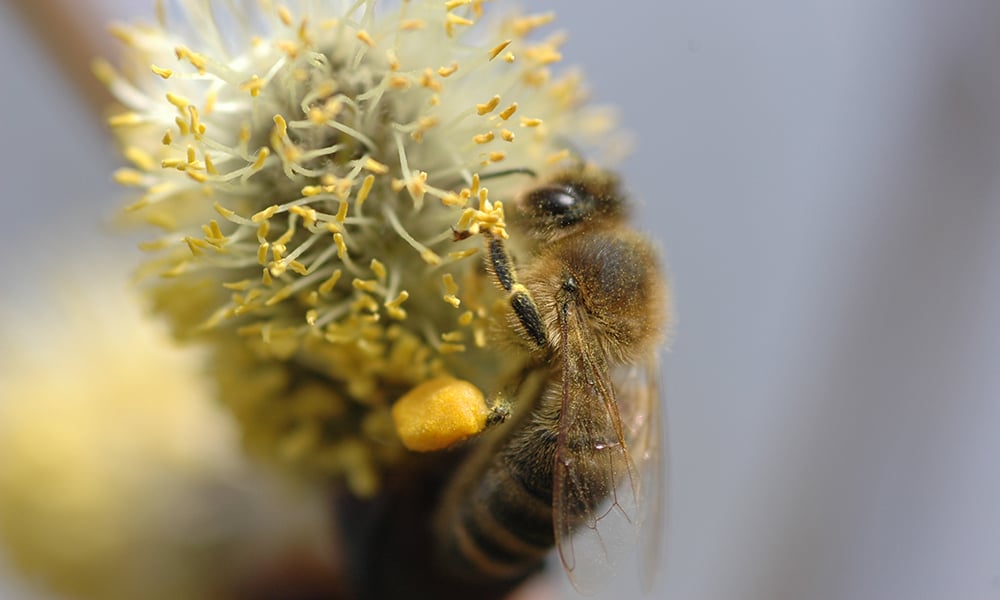
A honey bee on a buttonbush. Photo by Vera Buhl via Wikimedia Commons C-BY-SA-3.0.
* It's important to remember that honey bees are a domestic/agricultural species like livestock. They were not originally part of the local ecosystems. Therefore, they can outcompete native bee species for resources and potentially spread diseases to native bee species.
Jennifer Rydzewski
